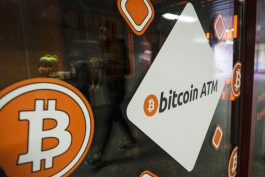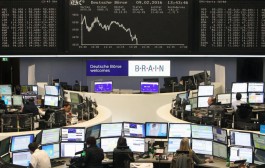On the sidelines of the tariff festival between the world's two largest economies, difficult strategic questions are being raised. Has China begun to abandon its doctrine of historical patience in favor of tactical shocks as a natural evolution in the cycle of civilizational actions of nations? ... After a quarter of a century, will the 21st century continue as it began, or will China have another say? ... Why is Washington now launching preemptive trade attacks, and what is Beijing's equal standing with it based on?! First, China entered the new millennium after achieving much in the past half-century. Its GDP surpassed the $1 trillion mark for the first time, compared to the $10 trillion mark for the US economy at the time. China's boom continued, peaking at the end of 2007 with astonishing growth of 14.2%. A new, devastating crisis, as is the norm with every decade, was necessary to bring Chinese growth back to its senses, below 10%. The 2008 global financial crisis resulted in growth falling again to 9.5% in 2009, but with a smaller margin. The US economy, which surpassed $14 trillion, overtook China, which snatched the title of the second-largest global economy from Japan, with a GDP exceeding $5 trillion. China then began the second decade of the 21st century with a continuous and chronic series of slowing growth. Second, the Chinese economy attempted to heal the wounds of the global financial crisis, achieving a post-crisis growth rate of 10.4% in 2010. This growth rate reached 7.7% in 2013, and continued to decline despite massive trillion-dollar plans for technology localization, Made in China, and the Belt and Road Initiative. Growth broke the 7% barrier with President Trump's inauguration in January 2017, sabotaging China's interim plans and deepening his trade war in its first form. This did the same to Chinese growth as the financial crisis, which saw sharp fluctuations from 2.2% during the 2020 COVID-19 pandemic to a sudden, temporary recovery of approximately 8.4% in 2021, after which it continued its downward trajectory, burdened by internal and external crises, to a rate of only approximately 5% by the end of last year, 2024. Third, it is no coincidence that the deliberate US depressing of China's then-strong growth rate coincided with the 2008 global financial crisis, in an undeclared trade war that lasted for nearly ten years. Nor is it surprising that Trump's tariffs in his first term were less severe than they are in his second. China is weaker in growth now, but larger in size and faces more complex structural challenges and problems. Therefore, the pace of its losses will be greater and deeper than ever, according to the theories of American political economy that govern Washington today. Fourth, objects in the mirror appear smaller and farther away than they actually are. This is in addition to the internal problems plaguing both the American and Chinese economies. We can draw on the conditions of the manufacturing, exports, and debt triangle for a clearer vision. Since the beginning of this century, the share of manufacturing in the US GDP has declined from 16% to approximately 9.9% by the end of the fourth quarter of 2024, while China's share has fallen by less than 5% during that period, from 32% to approximately 26.2%.
As for the ratio of exports to GDP alone, the United States increased by only 1%, from 10% in 2000 to 11% by the end of 2024, while China has strongly maintained a ratio of 20% during the same period. This explains a significant portion of its massive trade surplus with the world, amounting to nearly $1 trillion, compared to the $1.3 trillion US deficit with the world.
As for debt, the two major economies are facing enormous disasters that portend potential record-breaking bubble bursts within the joints of the two economies. The debt ratio is at a record high. The US government debt-to-GDP ratio jumped from 36% at the beginning of the millennium to 124% by the end of 2024, compared to an increase from 55% to approximately 86% for China during the same period. This deterioration, of course, also affected the private sector's debt-to-GDP ratio, which reached 150% in the United States and approximately 205% in China, according to the International Monetary Fund's monitoring at the end of last year.
Finally, within the context of the previous scenes are signs that force both sides to reach a new, yet unclear, boundary line. They also provide open answers to the questions at the beginning of the article. The Chinese dragon's patience is not in its favor now, and it is resisting with necessary equality to avoid losing the core of what it has built to the benefit of the American elephant, which is trying, based on the facts, to improve its situation by sharing the majority of what remains of the current century with China economically, albeit with a ruling share of only 51%, which would theoretically keep it victorious and dominant, unless the dragon has other actions.
By Mohamed Mahdi Abdel Nabi








































